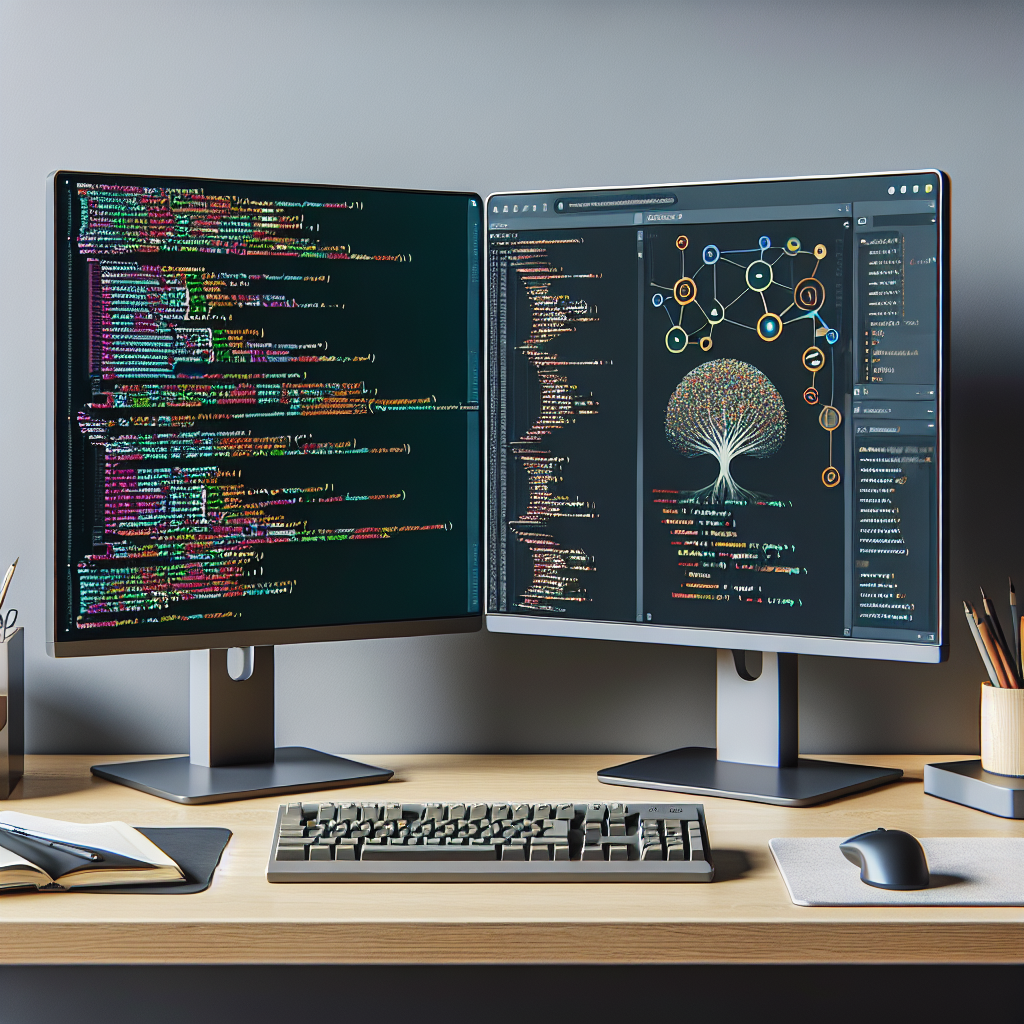The Transformative Power of ChatGPT in Coding: A Comprehensive Analysis
Introduction
The ever-evolving landscape of artificial intelligence has introduced revolutionary tools that are reshaping how we interact with technology. One such innovation is ChatGPT, an AI developed by OpenAI that's designed to assist with a wide range of tasks, including coding. In this article, we'll delve into the profound impact of ChatGPT on coding workflows, focusing on a practical demonstration involving code manipulation, weather data analysis, and visualization.
Bridging the Gap Between Human and Machine
ChatGPT stands out by providing not only textual responses but also leveraging its vision capabilities to interact with on-screen content. This dual functionality bridges a crucial gap, making it possible for the AI to understand and respond to both code and visual data seamlessly. This capability was showcased in a recent demonstration where ChatGPT assisted in analyzing and visualizing weather data.
The process kicks off with the user highlighting weather data analysis code and sending it to ChatGPT. Surprisingly, despite not seeing the screen initially, ChatGPT promptly comprehends the context. The AI offers a concise summary, "This code fetches daily weather data for a specific location and time period, smooths the temperature data using a rolling average, annotates a significant weather event on the resulting plot, and then displays the plot with the average minimum and maximum temperatures over the year."
The Role of Function 'Fu'
Enhancing Data Smoothing
One interesting aspect discussed in the demonstration is the function 'Fu' within the code. The user queries, "Could you describe what the plot would look like if I had versus didn't have this function?" ChatGPT responds with precision, explaining that the 'Fu XY' function "takes in a data frame X containing temperature data and a window size Y for calculating the rolling mean. It smooths the average temperature, minimum temperature, and maximum temperature columns by applying a rolling mean over the specified window."
By applying 'Fu,' the resulting plot exhibits smoother temperature lines. This effect is due to the rolling mean, which minimizes noise and fluctuations inherent in raw data. This feature underscores the importance of understanding specific functions within a codebase, illuminating how minor code tweaks can significantly alter visual outputs.
Real-Time Plot Analysis
Integration of Vision Capabilities
A noteworthy aspect of the demonstration is transitioning from code analysis to real-time plot visualization. After executing the code, the user shares the generated plot with ChatGPT using the AI's vision capabilities. ChatGPT swiftly analyzes the plot, noting that it "displays smoothed average, minimum, and maximum temperatures throughout 2018, with a notable annotation marking a big rainfall event in late September."
This capability transforms ChatGPT from a mere text-based assistant to a dynamic tool that can provide context-aware insights based on visual data. The user then probes further about temperature trends, asking, "Which months do you see the hottest temperatures and roughly what temperatures do those correspond to?"
ChatGPT identifies that "the hottest temperatures occur around July and August, with the maximum temperature during these months roughly between 25°C and 30°C (77°F to 86°F)." This rapid analysis not only saves time but adds layers of understanding to the data, facilitating more informed decision-making.
Efficiency and Accuracy
Elevating Coding Workflows
One of the most compelling takeaways from this demonstration is how ChatGPT elevates the efficiency and accuracy of coding workflows. By providing immediate explanations and visual data interpretations, ChatGPT helps coders navigate and optimize their code more effectively. This reduces the trial-and-error phase traditionally associated with coding, enabling more strategic and precise code development.
Moreover, ChatGPT's ability to work with multiple data formats (text and visual) enhances its versatility. This feature is particularly beneficial for data scientists and analysts who frequently handle extensive datasets and complex visualizations. The capability to instantly interpret and verify visual data ensures that critical insights are not overlooked.
Practical Implications and Future Potential
Revolutionizing Data Science and AI Integration
As we reflect on the practical implications of ChatGPT in coding and data analysis, it becomes evident that this tool is more than just an AI assistant. It represents a significant leap towards more integrated and intelligent programming environments. By enhancing communication between coders and their code, ChatGPT fosters a more intuitive and streamlined development process.
Looking ahead, the potential applications of ChatGPT are boundless. From automating routine coding tasks to facilitating advanced data visualizations, the AI's capabilities will likely expand, offering even more sophisticated support for various programming needs. For instance, future iterations could integrate more advanced machine learning models, further improving their ability to predict and optimize code performance.
For those interested in exploring the broader landscape of AI and coding, websites like OpenAI and Kaggle offer valuable resources and communities dedicated to AI research and practical applications.
Conclusion
In conclusion, the transformative power of ChatGPT in coding and data analysis is evident from its ability to understand complex code, provide real-time visual data interpretations, and enhance overall coding efficiency. By bridging the gap between human understanding and machine processing, ChatGPT paves the way for a future where AI partners seamlessly with human ingenuity to achieve remarkable outcomes. The demonstration discussed here is just a glimpse of what is possible, hinting at a future where AI and coding walk hand in hand towards unprecedented innovation.
As we continue to explore and integrate these technologies, the benefits will undoubtedly multiply, promising a new era of intelligent, efficient, and insightful programming.
For more information on ChatGPT and its applications in coding, visit the official OpenAI research page.
Related News
- Exploring the Evolving Landscape of AI: ChatGPT's Voice and Vision Capabilities
- A Deep Dive into ChatGPT: Features, Upgrades, and User Experiences
- Mastering ChatGPT: Elevating Your AI Game
- Harnessing the Power of AI: A Deep Dive into Enhancing ChatGPT with Plugins and Extensions
- ChatGPT Goes Mobile: Revolutionizing AI Accessibility
